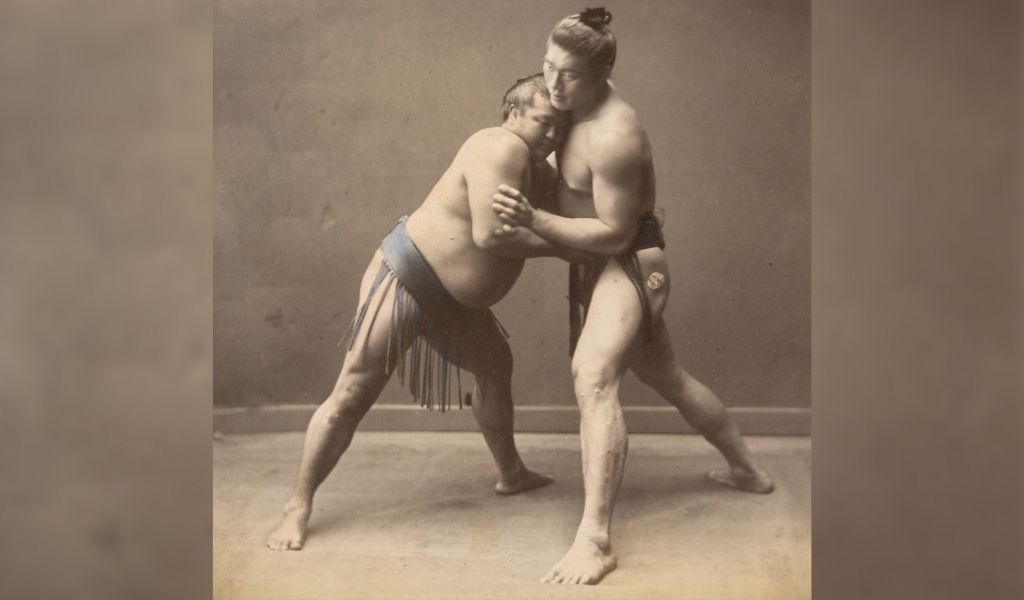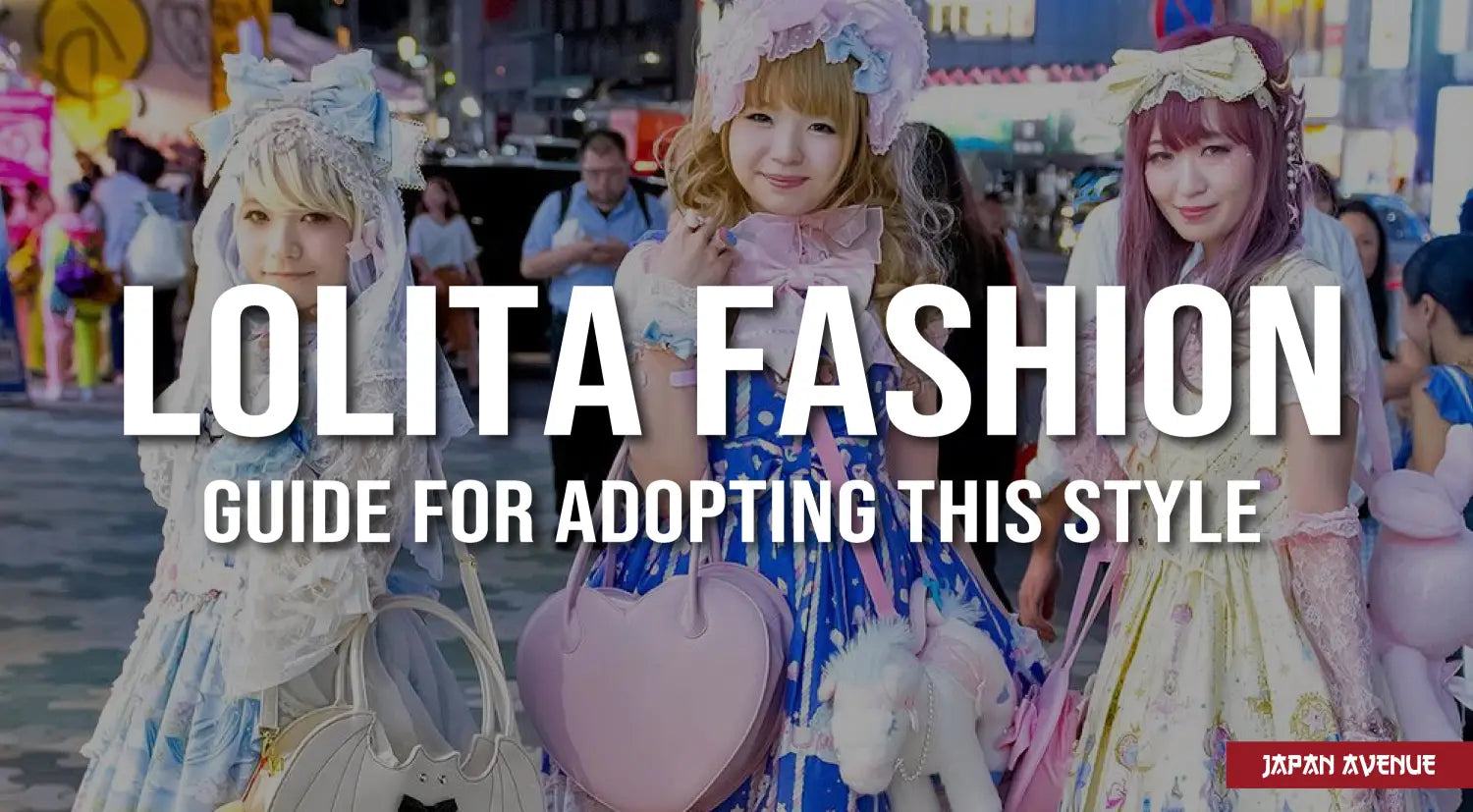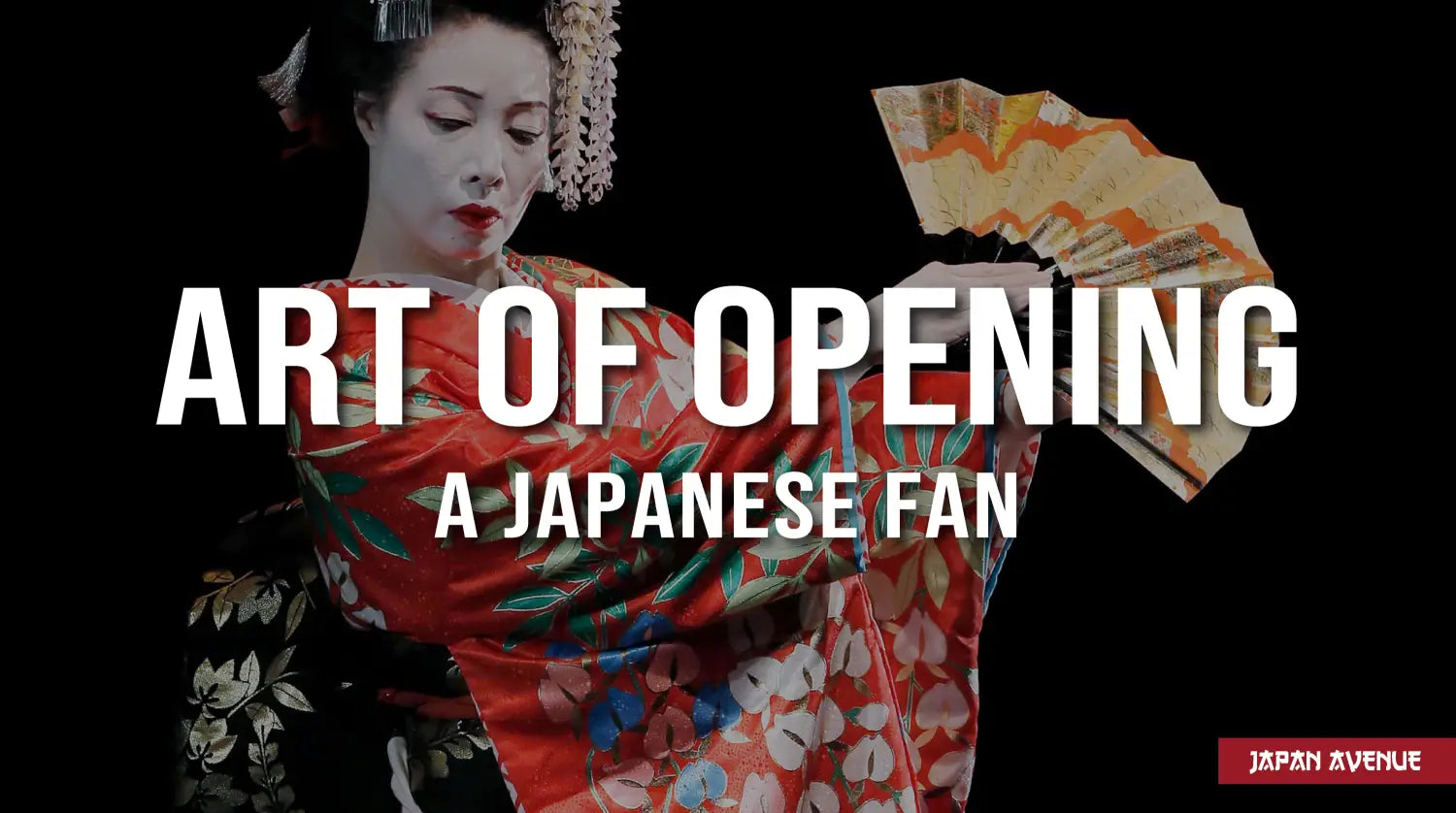As the designated national sport, sumo is a true tradition in Japan. This ancestral martial art is extremely popular and also the most sacred one in the Land of the Rising Sun.
Sumo is the traditional Japanese wrestling sport in which two strong opponents fight one another in close combat. The objective of this sport is to push his opponent out of the ring or to make him fall on the floor.
This discipline, both curious and impressive for foreigners, particularly denotes the uniqueness of Japanese culture.
Let's discover this very ritualized Japanese wrestling sport where fighters are compared to gods!
🔎 History and origins of sumo wrestling in Japan
Sumo is deeply rooted in the history of the Land of the Rising Sun. The oldest Japanese accounts of the Kojiki (published in 712) actually already mentioned this practice. Besides, it was during a wrestling match that the god Takemikazuchi defeated Takeminakata and won the Japanese islands.

On the left, two prints by Utagawa Kunisada, representing sumo wrestling (1840-1850). On the right, representation of the wrestler Masanosuke Inagawa by Kuniyoshi Utagawa (1845).
A little later, the Nihon Shoki, another historical book about the origins of Japan, recounts the victory of Nomi No Sukune, a legendary fighter. It was about a confrontation between two mortals: Nomi No Sukune and Taima No Kuehaya, the strongest warrior of the emperor Suinin. The first one defeated his opponent thanks to Japanese wrestling techniques and then became the god of Sumo.
As such, this Japanese martial art has its roots in Japanese mythology and Shintoism. Moreover, fighting rituals were organized in honor of the deities in order to appease them and favor the harvests.
Sumo through time
During the Nara period, sumo was used as a form of entertainment at the imperial court. Little by little, the discipline was codified. Rules and rituals were gradually established to get closer to the wrestling sport we know today.
During the Kamakura period, sumo took another vocation than entertainment or religious rituals. It became a martial art used by the samurai for close combat.
In the 17th century, when Japan entered a more peaceful era, sumo was freed from its military function and became the favorite attraction of aristocrats before being formalized as the national sport of Japan a century later.

Sumo wrestlers in the 1870s ©The New York Public Library
It was only towards the end of the 19th century that sumo wrestling appeared in the press. Rewards were now finally offered to those who won. At the same time, the sport began to be professionalized.
However, it was the nationalistic influence of the Showa era that made Japanese wrestling so popular. It was during this period, in 1925, that the Japanese sumo association was created. Its mission? To establish new rules and organize championships. The sumo fights were then broadcasted on the radio before appearing on television in 1953.
Nowadays, Japanese wrestlers are less and less numerous and are replaced by foreign fighters. It must be said that this sport requires extreme living conditions and a lot of sacrifices.
🤼♂ The rikishi or sumo wrestler
The professional wrestler is called a rikishi (which means "strong man"), not sumotori (a term reserved for beginners). In addition to being dressed in a very characteristic outfit, the fighter follows a rigorous training as well as a very particular lifestyle.
From adolescence, rikishi join a stable (heya), which is a kind of sumo club where they live in community and practice every day under the orders of the oyakata (former top wrestler, head of the stable).
New sumotori adopt a fighting name when they arrive at the facility. They were housed in dormitories while the higher ranked wrestlers had the right to an individual room. Not all of them became great champions and only the most powerful of them received a salary. It was the beginning of a very strict way of life for them.

Traditional rikishi outfit: a belt (mawashi) and a bun (chonmage).
The rikishi's outfit
What is quite remarkable for us outstanders, is the look of the rikishi during their fights. In addition to their striking stature, the wrestlers wear nothing on them except a kind of thong-like underwear that surrounds their waist 😲.
This belt, called mawashi, is their official outfit. It is worn at all fights, whatever the time of the year. The most imposing ones weigh nearly 4kg for a length of 8 meters. We wonder how many turns around the body one can do with this piece of cloth 😉.
Similar to samurais, wrestlers adopt the traditional bun to maintain their long hair back. Note that they can only cut their hair after retirement. As for the wrestlers of higher division, they distinguish themselves thanks to a typical hairstyle called oicho.

🥋 The training of sumo wrestlers
Wrestlers wake up early (about 5:00 am) and start exercising very early. They warm up and then train intensively on an empty stomach so as to be very hungry by lunchtime. The session ends with a fight. The highest ranked rikishi fight last and they also go to eat first, accompanied by the stable leader.
🥘 Lifestyle of sumo wrestlers
After a hard training session, sumo wrestlers take a bath. At lunchtime, they have to consume an impressive number of calories. For this purpose, they eat a high protein stew (chankonabe) accompanied by a lot of rice and they drink beer.
Then, after lunch, they get their hair done, finish their chores and then it's time for a nap, which is essential for storing proteins and fats. In the evening, sumos eat chankonabe again to reach about 8000 kcal/day which is almost 3 times more than a professional footballer 😮.
🙋♂️ The sumotori in 5 questions
Far from the physical archetypal sportsman we all know, sumo wrestlers are particularly respected in Japan and even revered. Their enormous stature, their strength, their mental toughness and their exemplary sense of discipline, fascinate.
These outstanding fighters and their strange rituals question us. Let's try to demystify the myth of these Japanese demigods.
1. Why are sumo wrestlers fat?
The question of weight is an obsession for the sumo wrestler, as the bigger he is, the more power he will have to push or throw his rival. It also helps him during the tachai-ai (first clash between the fighters), on which the victory often depends. In short, the weight will increase the strength of the sumo wrestler. However, a wrestler who is too fat will be slower, it is all a question of balance.
2. What is the average weight of a sumo wrestler?
The average weight of a rikishi is about 150 kg for a height of more than 1m80. The biggest wrestler in the history of sumo weighed 285 kilos.
3. How do sumo wrestlers gain weight?
Sumo wrestlers eat about 8,000 calories a day, before resting, which allows for better assimilation and significant weight gain, while their intense physical exercise develops muscle mass gain.
4. Are sumo wrestlers healthy?
Although they are largely overweight according to BMI criteria, sumo wrestlers who are still active do not especially suffer from obesity-related diseases since their fat is mainly under their skin and not in their viscera. Reason for this phenomenon: muscular workouts 💪.
5. What is the life expectancy of a sumo wrestler?
It is important to know that a sumo wrestler retires at around 30 years old. It is at this time that he has a high risk of developing visceral fat especially if he does not adapt his diet and physical activity. Due to overweight, sumo wrestlers are more exposed to cardiovascular and metabolic diseases. Their life expectancy is therefore reduced to 60-65 years. However, this remains highly variable from one individual to another.
💁♀️ Women's sumo
During a long time, this contact sport was exclusively reserved for men. Women were considered impure because of an old Shinto belief and they were not even allowed to attend the tournaments. What to get feminists' blood boiling 😔.
Yet, the oldest traces of women's sumo date back to the 18th century when fights were organized in brothels to entertain men.
Fortunately, since the end of the 20th century, this discipline finally opened to women, named shin-sumo. These women can practise among men. However, they cannot yet reach the rank of professionals. It will need some more time to make mentalities evolve in this very conservative Japanese art.
Lastly, women's sumo is on track as a first international women's tournament was held in Osaka in 2013... a major step in the world of sumo. Also, the International Federation wants to register the martial art in the Olympics, which would turn the sport into a mixed discipline.
👉 Sumo fighting: rules and rituals
Sumo is a combat sport with many rules and rituals. First of all, each rikishi adopts a shikona or wrestler's name. Contrary to many other martial arts, there are no weight categories. A heavyweight can therefore fight with someone weighing less than 100kg. All wrestlers wear the mawashi (silk for the first and second division) and their hair is combed in a traditional bun (chonmage).

Rikishi or sumo wrestlers before the fight. ©J. Henning Buchholz
Prior to each fight, the sumo wrestlers are named by the yobidashi or announcer who asks them to step onto the dohyo (a kind of arena). The fighters greet each other and then perform a few minutes of mental preparation. Here, they perform purification rituals, derived from Shinto ceremonies.
First, they start by doing a shiko (a ritual that consists in raising the leg very high to hit it hard on the ground) before drinking and spitting out a cup of water (chirkara mizu). Then, they throw a handful of salt on the ground to purify it. After that, the two wrestlers advance to the center of the dohyo facing each other, crouch down, clap their hands and stretch their arms (chiri chôzu).

Wrestler performing a shiko to impress his opponent. ©Alessio Roversi
After several series of rituals, the fight can finally begin. It starts when the gyoji (referee) gives the signal and turns his fan. This is the moment when the sumo wrestlers touch the ground with their fists before throwing themselves violently against each other. The tachai-ai (clash between the two wrestlers) marks the beginning of the assault.
To win the fight, the opponent must be taken out of the ring or hit the floor with another part of the body than his feet. Also, if the wrestler loses his mawashi, he loses... one more reason to tie it up well 😅. At the end of the tournament, the competitor with the most victories receives a prize.
📍 Techniques used in sumo
Wrestlers use their weight to push their rival into the ring. They use hand-to-hand techniques to destabilize their opponent. Note that there are currently 82 recognized sumo holds. During the fight, it is forbidden to pull the hair, to target the genitals, the eyes or the solar plexus, to hit with closed fist or to strangle the opponent. The fight ends when one of the rikishi steps out of the ring or touches the floor with any part of the body other than the foot.
😎 Attending a sumo tournament
Now that sumo has no more secrets for you, all that remains to do is to attend a tournament and admire this unique performance in the Land of the Rising Sun.

If you are planning a trip to Japan, be aware that there are six official sumo tournaments per year that last fifteen days. In January, March, May and September in Tokyo, in March in Osaka, in July in Nagoya and in November in Fukuoka.
To attend a sumo tournament, you should expect to pay about 15 euros and up to 70 euros in case of reservation. Some places like the 4-person boxes are much more expensive. You can take your ticket in advance in a konbini, directly on the spot or make a reservation on the internet. Be aware that tickets go fast! To ensure your place at a fight, we recommend you to buy your tickets one month in advance through an online booking site like Tiket Oosumo.
Emblematic of Japan and its traditional culture, sumo remains a fascinating and impressive form of martial arts. How about you, do you admire this sport?



